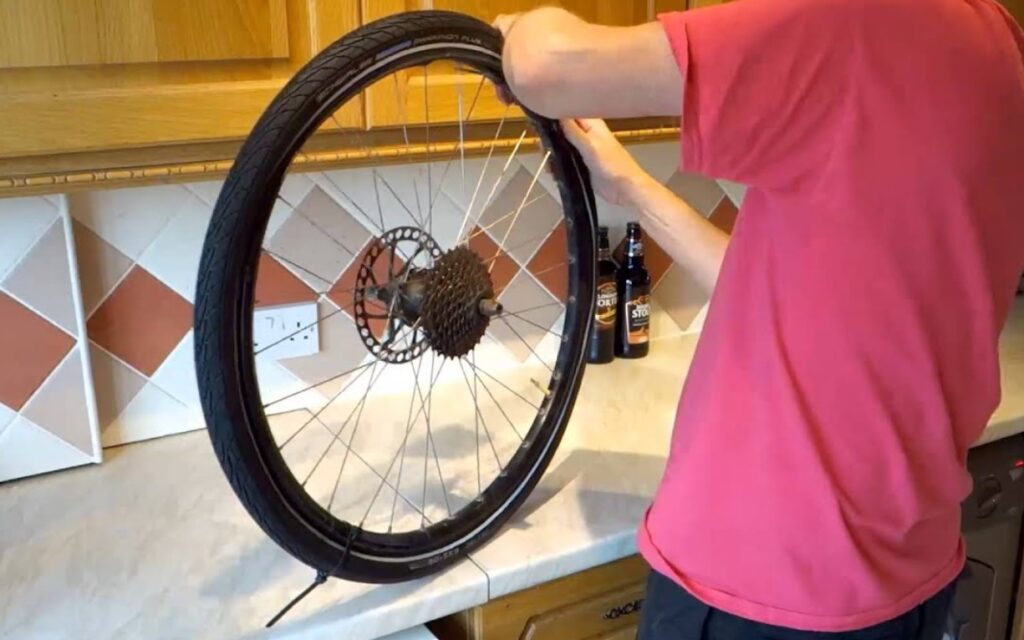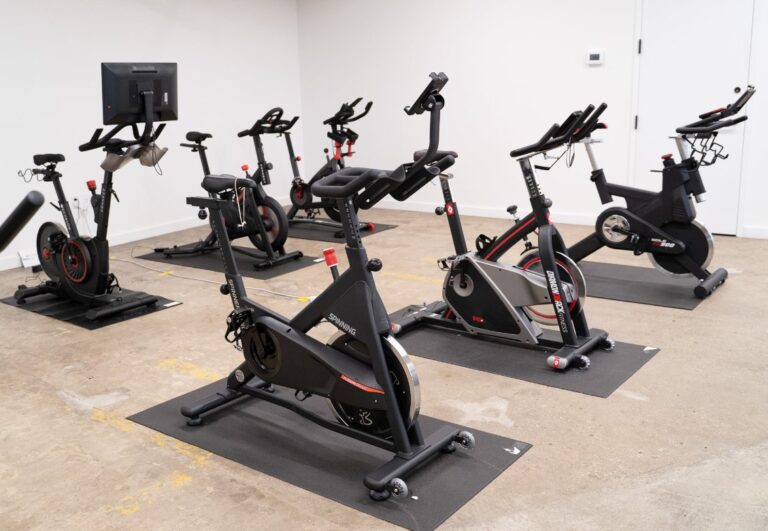Can Bike Tires Pop From Heat? All You Need To Know
The question of Can Bike Tires Pop From Heat? is one that many cyclists ponder during the hot summer months. The simple answer is yes, bike tires can indeed pop from excessive heat. This phenomenon occurs due to the expansion of air inside the tire, which increases pressure beyond the tire’s capacity to contain it.
Key Takeaways
- Bike tires are susceptible to popping from excessive heat due to the expansion of air inside them.
- Proper inflation and regular maintenance can mitigate the risk.
- Understanding the factors that contribute to heat-induced tire damage is crucial for prevention.
Can Bike Tires Pop From Heat?
Yes, bike tires can indeed pop from heat due to the expansion of air inside them, leading to increased pressure that may exceed the tire’s capacity to contain it, especially if not properly maintained or if already close to the pressure limit.

The Impact of Heat on Bike Tires
Heat affects bike tires in two primary ways: it increases the air pressure inside the tire and deteriorates the tire material. As temperatures rise, the air inside the tire expands, increasing internal pressure.
This can lead to a blowout if the pressure exceeds the tire’s maximum limit. Additionally, prolonged exposure to high temperatures can weaken the tire’s structure, making it more susceptible to damage.
Factors Contributing to Heat Buildup
Several factors contribute to heat buildup in bike tires, including ambient temperature, road surface temperature, and friction from riding. Dark asphalt, for instance, can get significantly hotter than the air temperature, further increasing tire temperature.
Preventing Heat-Induced Tire Damage
Preventative measures include regular tire maintenance, proper inflation, and avoiding prolonged exposure to hot surfaces. Cyclists should also consider the type of tire for their riding conditions, as some tires are designed to withstand higher temperatures.
The Science Behind Tire Blowouts
Tire blowouts from heat are not purely a matter of external temperature but involve the physics of air pressure. The ideal gas law (PV=nRT) explains how pressure (P) and volume (V) of air within the tire increase with temperature (T), potentially leading to a blowout if the tire’s structural integrity is compromised.
Understanding Pressure Changes
The relationship between temperature and pressure within a bike tire is direct. As temperature increases, so does the pressure, stressing the tire’s limits.
Materials and Heat Tolerance
Different materials have varying levels of heat tolerance. Synthetic rubber compounds used in bike tires are designed to handle specific temperature ranges. Exceeding these limits can accelerate wear and increase the risk of failure.
Maintenance Tips for Hot Weather
Proper maintenance is vital for preventing heat-related tire issues. This includes regular pressure checks, especially during warm weather, and using the correct tire pressure as recommended by the manufacturer.
Choosing the Right Tire
Not all bike tires are created equal. Some are designed with heat resistance in mind, featuring materials and construction that provide better performance in high temperatures.
Regular Checks and Balances
Routine inspections for wear and damage, along with adjustments to tire pressure based on weather conditions, are essential practices for cyclists aiming to extend the lifespan of their tires and ensure safety.
The Role of Cycling Conditions
Cycling conditions, including terrain, speed, and rider weight, also affect how heat impacts bike tires. High speeds on hot asphalt can amplify the heat effect, while heavier loads increase pressure on the tires.
Terrain and Temperature
Different terrains absorb and reflect heat differently, affecting tire temperature. Cyclists should be mindful of these variations, especially when riding in urban areas with lots of asphalt.
Speed and Friction
Higher speeds generate more friction, which in turn produces more heat. Slowing down and choosing routes with cooler surfaces can help mitigate this effect.
Given the comprehensive nature of exploring how heat affects bike tires, including preventive measures and understanding the underlying science, cyclists can better prepare for and navigate the challenges of riding in hot weather.
Regular maintenance, informed tire choices, and adapting riding habits according to weather conditions are key strategies for preventing heat-induced tire problems.
How To Avoid Bike Tyre Damage In Summers?
Avoiding bike tire damage during the summer requires a mix of preventative maintenance and riding adjustments. Firstly, maintaining the correct tire pressure is paramount; consult your tire’s specifications and adjust pressure based on temperature changes.
Tires should be inflated within the manufacturer’s recommended range, considering that air expands with heat. Regular inspections for signs of wear, such as cracks, cuts, or thinning, can help identify issues before they lead to damage.

Utilizing tires designed for higher temperatures or specific summer conditions can also enhance durability. When possible, store your bike in a cool, shaded area to minimize prolonged exposure to heat and direct sunlight, which can degrade tire materials over time.
Riding habits play a role too. Opt for cooler times of the day for your rides, such as early mornings or late evenings, to avoid peak heat. Additionally, choose routes with less abrasive surfaces and more shade, as this can help keep tire temperatures lower.
Implementing these strategies can significantly reduce the risk of tire damage during hot weather, ensuring a safer and more enjoyable cycling experience.
Why Did My Bike Tire Suddenly Pop?
A bike tire can suddenly pop for several reasons, often unrelated to the rider’s immediate actions. One common cause is a puncture from sharp objects like glass, nails, or thorns that penetrate the tire.
Overinflation is another culprit, where the tire pressure exceeds the maximum limit specified by the manufacturer, leading to a blowout. Heat plays a significant role as well; on hot days, the air inside the tire expands, increasing internal pressure which can cause the tire to burst if it’s already near its pressure limit or if the tire has pre-existing damage or weaknesses.

Wear and tear over time can weaken the tire’s structure, making it more susceptible to popping under normal conditions. Lastly, improper installation or a mismatch between the tire and rim size can lead to sudden tire failure.
Recognizing and mitigating these risks through regular tire maintenance, correct inflation, and cautious riding can prevent most instances of sudden tire popping.
Can Bike Tires Go Flat From Heat?
Yes, bike tires can go flat from heat, though the process might not be as immediate as a pop. Heat causes air within the tire to expand, increasing internal pressure.
If a tire is already weak from wear or has a slow leak, the added pressure from heat can exacerbate these issues, leading to a flat tire. Furthermore, heat can soften the tire compound, potentially allowing small punctures or flaws to become more pronounced, leading to gradual air loss.
Additionally, the continuous expansion and contraction of air inside the tire due to temperature fluctuations can stress the tire and valve mechanism, potentially leading to leaks.
To minimize the risk of heat-induced flats, ensure your tires are in good condition, regularly check and adjust tire pressure according to weather conditions, and avoid leaving your bike in hot, sunny areas for extended periods.
Conclusion
In conclusion, bike tires can indeed pop from heat, a result of increased internal pressure and material degradation. Through vigilant maintenance and mindful cycling practices, riders can significantly reduce the risk of experiencing a heat-induced tire blowout.
Remember, the well-being of your bike tires is not just about handling the immediate pressures but also about understanding and mitigating the cumulative effects of heat over time.
Always choose your tires wisely, keep them well-maintained, and adjust your riding habits to suit the temperature conditions to ensure a safer, more enjoyable cycling experience.
Top FAQ’s
How often should I check my bike tires in summer?
It’s wise to check your bike tires before every ride during summer, paying close attention to both tire pressure and signs of wear or damage. This frequency ensures that any adjustments for temperature changes or damage can be made promptly to prevent accidents.
Do heavier riders need to adjust tire pressure differently in hot weather?
Heavier riders may need to adjust tire pressure differently in hot weather because additional weight increases the pressure on tires, potentially exacerbating the effects of heat. It’s advisable to slightly increase tire pressure within the safe range recommended by the tire manufacturer to accommodate the extra load while accounting for temperature effects.
Can riding speed affect how heat impacts bike tires?
Yes, riding speed can affect how heat impacts bike tires. Higher speeds generate more friction, which can increase tire temperature and pressure. Slowing down a bit and choosing routes that offer some shade or cooler surfaces can help mitigate these effects.
Is there an optimal tire pressure for hot weather cycling?
The optimal tire pressure for hot weather cycling depends on the tire’s specifications and your bike’s weight, including any cargo. It’s crucial to start with the manufacturer’s recommended pressure and adjust slightly lower in extremely hot conditions to allow for air expansion. However, always stay within the recommended pressure range to avoid under-inflation risks.

Welcome to the exhilarating world of Matt Rex, a professional car racer turned renowned vehicle enthusiast. Immerse yourself in his captivating blog as he shares heart-pounding adventures, expert reviews, and valuable insights on cars, trucks, jets, and more. Fuel your passion for speed and discover the beauty of vehicles through Matt’s engaging stories and meticulous expertise. Join the ever-growing community of enthusiasts who find inspiration and expert advice in Matt Rex’s blog—a digital hub where the thrill of speed meets the pursuit of knowledge.







